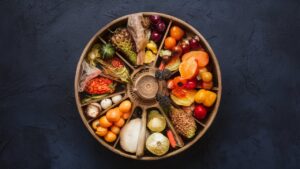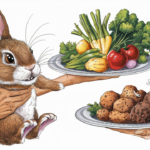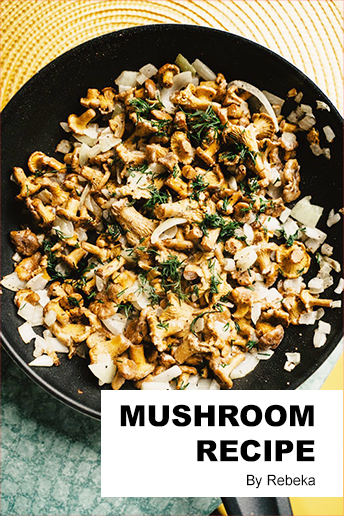- The environmental impact of pasture-raised meat and egg production
- Introduction to Pasture-Raised Farming
- Benefits of Pasture-Raised Meat and Eggs
- Environmental Impact of Pasture-Raised Production
- Soil Health and Biodiversity
- Water Quality and Conservation
- Animal Welfare Considerations
- the environmental impact of pasture-raised meat and egg production
- Challenges and Limitations
- Certifications and Labeling
- Consumer Demand and Market Trends
- Policy and Regulatory Considerations
- Future Outlook and Recommendations
- Conclusion
- FAQ
- 1. What is the environmental impact of pasture-raised meat and egg production?
- 2. How does pasture-raised meat production differ from conventional animal production systems?
- 3. What are some of the environmental benefits of pasture-raised egg production?
- 4. How do environmental issues in poultry farming impact the overall food system?
- 5. What role does animal welfare play in evaluating the environmental impact of pasture-raised meat and egg production?
- 6. How do pasture-raised meat production systems compare to conventional animal feeding operations?
The environmental impact of pasture-raised meat and egg production
As an Indian consumer, I worry about our food’s effect on the environment. Large-scale farming is a leading cause of climate change. It creates more than a quarter of the earth’s greenhouse gases. About half of usable land is for farming, and most of that is for livestock. The impact is huge, especially since Americans eat a lot of eggs – 288 each year.
Pasture-raised farming is a better option. It uses open fields for animals to roam and eat freely. This method lowers harmful emissions, boosts soil health, and helps wildlife. I will explore how this way of farming helps the planet and what challenges it faces.
Key Takeaways
- Pasture-raised farming is a more sustainable and ethical alternative to industrial agriculture.
- Pasture-raised meat and eggs can reduce greenhouse gas emissions, improve soil health, and protect biodiversity.
- Grass-fed and organic meat options may have higher environmental impacts than conventional production methods.
- Reducing overall meat consumption is critical for achieving global climate goals.
- Consumers can support sustainable farming practices by choosing pasture-raised, organic, and locally-sourced animal products.
Introduction to Pasture-Raised Farming
What is Pasture-Raised Farming?
Pasture-raised farming is a way of farming where animals roam free in open fields. They can act naturally and find their own food, like grasses and insects. It’s way different from how most animals are kept in small spaces and fed only specific food.
This method lets animals move around, stay active, and be healthier. The idea is it helps the land and the animals and is better for the environment in the long run.
Chickens and other birds can walk around during the day but are kept safe at night. This keeps them from getting hurt by other animals. Meat chickens, for example, are kept in pens that are moved from field to field. This stops them from eating too much in one place.
The care for the land is important too. Farmers plan where animals go, so plants and soil stay healthy.
This kind of farming is good for many reasons. It makes the food from these animals better for us. It also helps the Earth and makes sure the animals are treated well.
By mixing many kinds of grass and plants in the fields, the whole area stays strong and healthy. Farmers look at the big picture. They make sure their farm works well with nature.
With people wanting food that’s good for us and the planet, this way of farming is becoming popular. It’s a choice that feels right for many.
Benefits of Pasture-Raised Meat and Eggs
Pasture-raised meat and eggs have many advantages over factory farmed ones. These farming methods let animals move freely. They show their natural behaviors, which makes them healthier and happier. This makes the meat and eggs better for us to eat. It also meets the needs of people who want food that’s ethical and good for the planet.
Pasture-raised options are better for you, too. Chickens that roam eat various natural foods. This includes plants and bugs. As a result, their eggs are full of healthy nutrients. They have bright yolks and strong whites. These eggs are packed with vitamins, minerals, and antioxidants. Meat from these animals has more good fats than other types. This makes it healthier for our bodies.
- Animals on pasture farms act naturally, which improves their health.
- Meat and eggs from these animals are full of nutrients like omega-3s and vitamins.
- This type of farming helps protect nature by maintaining a variety of plant and animal life.
Pasture farming is also good for the planet. Chickens that roam freely help keep a healthy ecosystem. This means more plant and animal diversity. Plus, this type of farming doesn’t rely as much on one type of crop or chemicals
.
This kind of farming also helps the soil and captures carbon from the air. This means it’s kinder to the environment. The soil stays healthier this way.
| Metric | Pasture-Raised | Conventional |
|---|---|---|
| Omega-3 Fatty Acids | Higher | Lower |
| Vitamin E | Higher | Lower |
| Vitamin D | Higher | Lower |
| Yolk Color | Vibrant | Pale |
| Egg White Firmness | Firm | Watery |
The benefits of pasture-raised meat and eggs go beyond health and the environment. They also give farmers more say in what they do. This kind of farming supports local businesses and protects the land. As more people look for food that is good for the world, these methods become crucial.
“Pasture-raised farming not only enhances the nutritional quality of our meat and eggs but also promotes a more sustainable and ethical food system.”
In conclusion, pasture-raised meat and eggs change the game for the better. They improve the lives of animals, our health, and the world we live in. As we become more aware of where our food comes from, choosing these options becomes key. This helps our planet and supports a farming way that’s good for everyone’s future.
Environmental Impact of Pasture-Raised Production
Greenhouse Gas Emissions
Pasture-raised methods often have less impact on the environment than big farm operations. Animals raised on pasture have a smaller carbon footprint. They eat natural foods and help store carbon in the soil. For example, grass-fed beef releases up to half less greenhouse gases than those on grain-fed diets. By regularly moving their animals to different pastures, farmers can also improve the health of the land. This reduces their impact on the climate even more.
Yet, there’s still an issue with greenhouse gases from these farming methods. Animals like cattle can produce a lot of these gases through digestion. Livestock as a whole make up 18% of all greenhouse gas emissions in the world. This includes 9% of the carbon dioxide and 37% of the methane that we release.
| Impact Metric | Pasture-Raised | Industrial Animal Agriculture |
|---|---|---|
| Greenhouse Gas Emissions | Up to 50% lower than grain-fed beef | Accounts for 18% of global greenhouse gas emissions |
| Carbon Dioxide Emissions | Reduced through carbon sequestration in soil | Contributes to 9% of global emissions |
| Methane Emissions | Some emissions from ruminant animals | Contributes to 37% of global emissions |
Still, when we look at the big picture, pasture-raised foods are better for the planet. Their environmental impact, especially concerning greenhouse gases and carbon, is lower than with industrial methods.
Soil Health and Biodiversity
Pasture-raised farming helps soil and nature grow strong. Livestock grazing lets various plants grow. This helps many insects, birds, and mammals thrive, making a healthy ecosystem. The animal poop and deep grass roots make the soil better. This means more water gets in, nutrients move well, and the land is good for everyone.
Keeping chickens on pastures is great for the ground. They spread their rich manure, feeding the grass and crops. This also improves soil by stopping erosion and controlling bugs. Chickens eating weed seeds means fewer weeds and better grass roots.
Chicken poop has a lot of phosphorus, which is good for the soil. Moving the chickens often stops overgrazing and keeps the soil healthy.
| Environmental Impact | Pasture-Raised | Industrial |
|---|---|---|
| Greenhouse Gas Emissions | Lower due to more efficient nutrient cycling and manure management | Higher due to concentrated waste and reliance on synthetic fertilizers |
| Land Use | More efficient use of grazing land, less land conversion | Requires more land for feed production, leads to habitat loss and deforestation |
| Biodiversity | Promotes diverse plant and animal life through rotational grazing | Monocultures and lack of habitat diversity lead to reduced biodiversity |
| Soil Health | Improves soil structure, organic matter, and nutrient cycling through manure and deep-rooted plants | Degrades soil health through intensive tillage, synthetic inputs, and lack of diversity |
“Pastured poultry farming helps in creating a nutrient-rich material for grass and pasture crops while promoting food growth through the presence of plant roots.”
Livestock farms and the environment change with where they are and how they’re run. Old ways of raising animals use what’s around, like leftovers from crops. But today, some farms buy all their animal food. This makes things more costly and causes more pollution.
Places for animals to graze around the world are changing in three big ways. Some wild areas become farms, some farms become something else, and some fields get damaged. Nearly a quarter of all these lands aren’t as good as they used to be. Trees are cut down in parts of the Americas, making small islands of grass. Closer to cities and farms, these open spaces are lost, making it hard for wild animals to find a home.
Water Quality and Conservation
Pasture-raised farming is kinder to water and helps keep it clean. This way of farming involves deep roots and varied plants. These help stop nutrients and dirt from getting into streams and lakes. This farming method also uses smart ways to deal with animal waste. By moving animals to different fields and placing their waste carefully, it cuts down on water pollution. Because of this, the soil gets better, letting water soak in and refill the underground water supplies better.
The big farms with a lot of animals, however, can hurt water in many ways. They use much more water than we do in our homes. The waste they make, over 100,000 pounds every second in the U.S., can harm waters if not handled right. It’s a problem because this waste can flow into water sources we use for drinking and other needs.
Pasture-raised farms can make a big difference by using a special way to let animals graze. This way, they help save water and keep it clean. It’s great for the planet and our food’s future, making things better for those who come after us.
“Pasture-raised farming is a powerful tool for improving water quality and conservation, as it helps to reduce nutrient runoff, enhance soil health, and minimize water pollution compared to industrial animal agriculture.”
As more people learn about how their food choices affect nature, they choose pasture-raised meat and eggs. This choice supports healthier water and farming that’s good for the Earth. It’s a way for everyone to be part of safeguarding our water and making our food system greener.
Animal Welfare Considerations
Pasture-raised farming greatly improves animal welfare over industrial animal agriculture. Animals raised this way can do what comes naturally, like looking for food, moving around, and bathing in dust. They’re not kept in small spaces and can go outside. Also, they get to eat a wide variety of foods that are part of their natural diet. This means a healthier, less anxious life for them, and better meat and eggs for us.
Industrial factory farms, on the other hand, offer animals a tough life. They live in bad places, are sometimes changed, and go through things that are hard for them. Studies show that farm animals are smart and have feelings, like pain, being upset, enjoying things, and feeling happy. For example, pigs are clever and can learn from others to get food. Cows like being together and remember a lot of others they’ve known. Chickens can control themselves and might show when they’re not happy.
The OIE works to set good animal welfare rules for trade between countries. Some people support animal welfare, wanting to make sure animals aren’t treated badly or feel pain they don’t need to. Others, known as animal rights advocates, think animals have rights much like people do, and don’t agree with using animals in any way.
All in all, how animals are treated in pasture-raised systems is key to why they’re better for the earth and our thoughts about what’s right. Letting animals act as they would in the wild and giving them a good life is part of making food in a way that keeps going and is kinder.
“Good animal welfare includes low disease levels, normal reproduction, displaying innate behavior, and longevity.” – World Organisation for Animal Health (OIE)
the environmental impact of pasture-raised meat and egg production
Life Cycle Assessments
Studies have compared the impact of pasture-raised farming with industrial systems. They show that pasture farming is better for the environment. It has lower emissions, uses less land, and needs fewer resources. For instance, in Canada, study found pasture eggs had 30-50% fewer carbon emissions than other eggs. Also, grass-fed beef can have a 40-60% lower carbon footprint. But, these benefits can change based on how things are managed.
More people are interested in pasture farming because it’s more sustainable. It also offers a variety of food choices. Pasture farming needs less investment, is safer for those working, and is less likely to bother people nearby with smells or pollution. Good pastures can make soil better, reduce grain farming needs, and protect against harmful chemicals runoffs.
Still, not every alternative method is better for the planet than traditional farming. In most cases, alternatives do more harm to the climate for each gram of protein they produce. This is a reminder to look closely at how different farms operate, instead of assuming alternatives are always the best choice.
Understanding life cycle assessments helps us know the true impact of farming practices. With this knowledge, everyone involved in food production can choose more sustainable methods.
Challenges and Limitations
While pasture-raised meat and eggs help the environment and animals, they face some issues. They need more land and work, which makes them pricey for farmers and hard to reach for buyers. The chicken business is trying to lessen its toll on earth by using better farming methods and technology.
Folks wonder if pasture farming can keep up with the world’s hunger for meat. Plus, people need to know more about the differences between pasture-raised, free-range, and factory farming. This info could push more folks to choose the greener options.
- Pasture-raised systems generally require more land and labor, making them more expensive for producers and less accessible for consumers.
- There are questions about the scalability of pasture-based farming to meet growing global demand for animal proteins.
- There is a need for better consumer education and awareness around the differences between pasture-raised, free-range, and industrial animal products to help drive increased demand for the more sustainable options.
| Challenge | Description |
|---|---|
| Economic Feasibility | Pasture-raised systems generally require more land and labor, making them more expensive for producers and less accessible for consumers. |
| Scalability | There are questions about the scalability of pasture-based farming to meet growing global demand for animal proteins. |
| Consumer Education | There is a need for better consumer education and awareness around the differences between pasture-raised, free-range, and industrial animal products to help drive increased demand for the more sustainable options. |
Pasture-raised farming is great for the planet and animals, but it deals with economic and growth challenges. Sort out these hurdles, and more people will go for this better way of farming animals.
“The average flock mortality rate ranges from 20 to 25 percent per year.”
High death rates are a big issue in raising chickens and eggs on pasture. On average, between 20 to 25 percent of the birds die every year. Good care, preventing diseases, and getting things like the temperature and light right are key. This helps lower losses and makes pasture systems more profitable.
There’s also the problem of how poultry and egg farming is set up. Many small farmers, each with only a few chickens, mostly sell nearby. Combining efforts and improving how they sell could make pasture products more available and scalable.
Overall, pasture-raised farming is a win for the environment and animals. But, we must beat the economic, growth, and education challenges to see more of its benefits spreading.
Certifications and Labeling
Understanding food certifications and labels can be hard, especially for those wanting to back ethical farming. The USDA permits claims like “no antibiotics added” with proper proof. Yet, many industrial farms still use antibiotics frequently. There’s an increase in using names like Angus or Wagyu for cattle. But, without a clear definition for heritage breeds, this practice might be misleading.
Understanding Certification Programs
There are many programs and labels to help spot quality meat and eggs, like organic and animal welfare ones. For instance, Certified Humane’s standard requires 2.5 acres per 1,000 birds, following Animal Welfare Institute’s norms.
Groups like the Global Animal Partnership rank farms by access to pasture, with Step 4 needing pasture for all animals. Then, there’s the American Grassfed Association, demanding pasture and an all-forage diet, disallowing feedlots and synthetic growth aids. Even the USDA’s Organic label pushes for outdoor time, especially for ruminants.
But, the language on labels can be tricky, and standards differ in their strictness and environmental impact. “Cage-free” only declares hens aren’t in a cage, nothing more. “Grass-fed” meat can come from feedlots, and there’s some room to use hormones and antibiotics.
Some label claims, like “no hormones added” on poultry and pork, are deceptive. This is already banned by the USDA. “Fresh” on meat means it’s never been below a certain temp, not that it’s high-quality.
For smart buying, knowing what different certifications mean is key. The ASPCA picks out Animal Welfare Approved, Certified Humane, and Global Animal Partnership as top choices for animal well-being.
Learning about certifications and labels helps shoppers make eco-friendly food choices.
“Consumers are often confused by the array of eco-labels and claims on food products, making it challenging to identify genuinely sustainable and ethical options. Clear and transparent standards are crucial for empowering shoppers to make informed choices.”
Consumer Demand and Market Trends
People are more interested in buying meat and eggs that are raised on pastures, organically, and in a sustainable way. They care about nature and the well-being of animals used for food. You can now find such products in big stores and buy them straight from farmers or online.
These special types of meat and eggs may cost more, making them hard for everyone to buy. It’s important that people keep learning and that the rules help make this kind of farming more common.
The whole world is eating more meat every year, with over 350 million tonnes made in a year. Asia is making more meat now than Europe and North America together. More and more of this meat comes from birds like chickens.
But, a lot of folks are now choosing to eat meat made from plants instead. Over the years, the sales of these plant meats have gone up a lot in the US and Europe. This change helps animals and the planet, especially as the world’s population is growing fast.
Even with these changes, there’s still a big chance for pasture-raised and organic meats and eggs to grow. New technology in making meats and eggs, and more people wanting to eat in a way that helps the planet and treats animals well, are guiding the industry’s future.
| Meat Type | Global Production (Million Tonnes) | Global Consumption (kg/capita) |
|---|---|---|
| Pigmeat | 119.5 | 14.1 |
| Poultry | 128.2 | 13.3 |
| Beef and Buffalo | 70.4 | 6.4 |
| Mutton and Goat | 15.5 | 2.0 |
The need for better choices in foods like pasture-raised meats and eggs keeps growing. Companies need to change to meet what people want and to help the environment.
“The rise in consumer demand for sustainable food options presents both opportunities and challenges for the pasture-raised meat and egg industry. Balancing affordability, accessibility, and environmental impact will be crucial in shaping the industry’s future.”
Policy and Regulatory Considerations
Governments and their policies shape pasture-raised meat and egg production’s future. Regulations on animal welfare, the environment, and farm subsidies matter a lot. They can make pasture-raised farming more or less successful. For example, the EU said no to battery cages for hens. This led to more pasture-based and cage-free farming.
The U.S. is also looking into ways to support better farming practices. The 2018 Farm Act helps farmers hit by disasters with several programs. It also supports buyers of livestock products when times are tough for farmers.
Additionally, USDA’s Risk Management Agency offers insurance for livestock against price drops. The EPA, on the other hand, checks on animal waste from big farms. There are also rules to make sure public lands used for grazing stay healthy.
The USDA’s APHIS works to keep livestock healthy and food safe. It runs a program where livestock buyers have to report their deals. This is to keep the buying and selling fair.
The need for organic and pasture-raised food is growing. So, policymakers have to help this industry grow. They should make rules and offer help to promote good animal welfare and environmental protection.
“Sustainable agriculture is not just about producing food but also about preserving the land, water, and air for future generations. Policymakers have a crucial role to play in shaping the future of farming.”
Future Outlook and Recommendations
More people are choosing pasture-raised meat and eggs because they care about the planet and animals. This means the future looks good for these products. For them to become even more common, we need to do a few things.
First, we should have rules that help farmers go green, teach shoppers why these foods are good, and make them easier to find and cheaper. Everyone, from farmers to the government to regular folks, needs to team up. Together, we can make sure the food we eat is good for the Earth, doesn’t harm animals, and keeps us healthy.
Let’s talk about how governments can make pasture-raised foods more popular. They could give money to farmers who go green, and they could also teach people why these foods are great. Many people don’t know about pasture-raised options yet. Educating them about these foods can make them want to buy them more.
To keep our Earth healthy, we must keep learning and getting better at making pasture-raised goods. This means finding ways to fight climate change and using water smarter. By doing this, pasture-raised farming can continue to be a big help in keeping our food system strong and eco-friendly.
| Recommendation | Key Stakeholders Involved |
|---|---|
| Expand policy support for pasture-raised farming | Governments, industry associations, advocacy groups |
| Increase consumer education on the benefits of pasture-raised products | Industry, advocacy groups, educational institutions |
| Invest in research and development for climate-resilient pasture-raised systems | Research institutions, government funding bodies, industry |
| Promote collaboration across industry, government, and civil society | All stakeholders |
We can make real change and improve our world by following these steps. pasture-raised farming is a good choice for the future because it’s kind to the planet and the animals.
Conclusion
Exploring pasture-raised meat and eggs shows us a better way. It’s better for the earth and the animals. Studies find they have a lower impact on the environment than factory farming.
But, there are problems that need solving. Making this method work for more people is not easy. Getting enough food this way can also be a challenge.
Still, if we keep trying, there’s hope. Better laws, teaching people, and new ways to farm can make a difference. We can help the earth, the animals, and our own health by choosing these products.
FAQ
1. What is the environmental impact of pasture-raised meat and egg production?
Environmental impact refers to the effect that pasture-raised meat and egg production systems have on the environment. This includes considerations such as land use, water consumption, greenhouse gas emissions, and overall sustainability.
2. How does pasture-raised meat production differ from conventional animal production systems?
Pasture-raised meat production involves animals raised on pastures where they graze freely, typically with more space and access to natural forage compared to animals in conventional systems. This can have both positive and negative impacts on the environment.
3. What are some of the environmental benefits of pasture-raised egg production?
Pasture-raised egg production can lead to lower environmental footprint than conventional egg production systems. It may also promote environmental protection through sustainable land use practices and reduced reliance on intensive farming methods.
4. How do environmental issues in poultry farming impact the overall food system?
Challenges related to poultry farming, such as waste management and resource consumption, can contribute to significant environmental concerns within the food system. Addressing these issues is essential for achieving a more sustainable agricultural sector.
5. What role does animal welfare play in evaluating the environmental impact of pasture-raised meat and egg production?
Considerations for animal welfare can influence the environmental benefits of pasture-raised systems. Providing animals with better living conditions may lead to improved health and welfare outcomes, which in turn can affect the overall environmental impact.
6. How do pasture-raised meat production systems compare to conventional animal feeding operations?
Pasture-raised systems typically involve animals grazing on natural pastures and have a lower environmental impact compared to more intensive animal feeding operations that rely heavily on feed production and agricultural inputs.

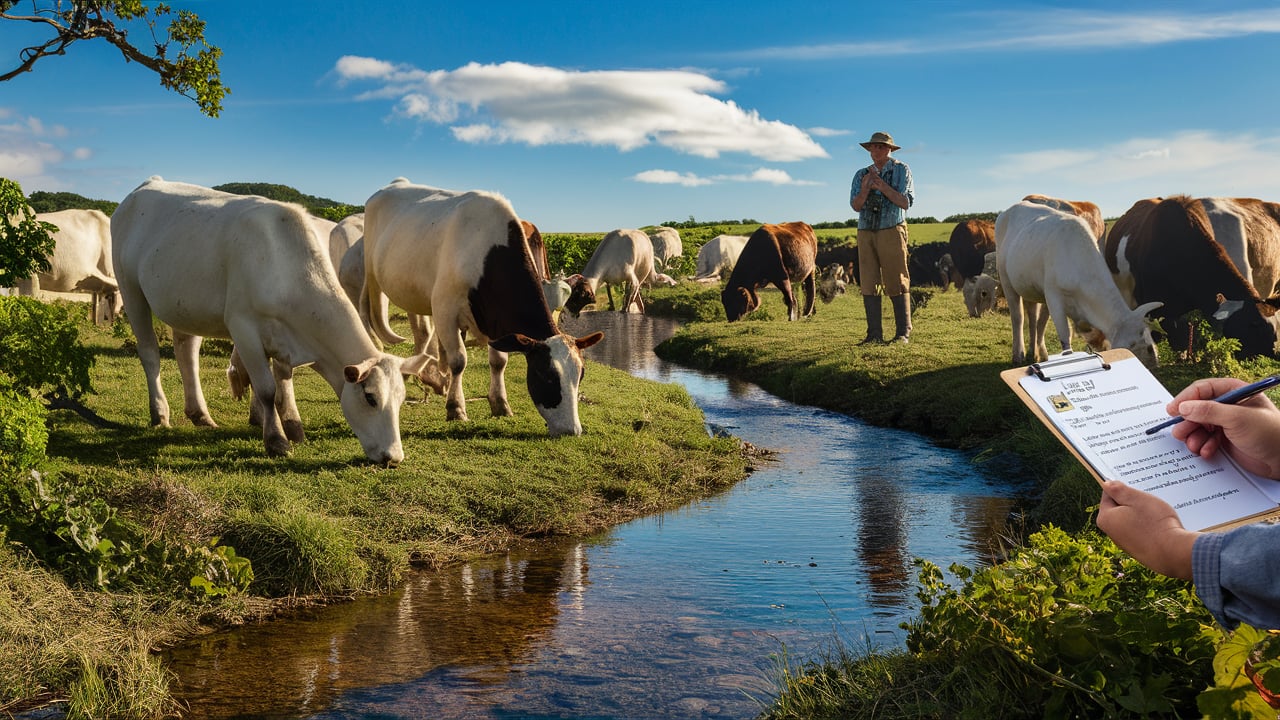
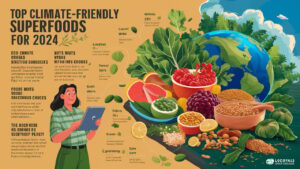 Top climate-friendly superfoods to add to your diet in 2024
Top climate-friendly superfoods to add to your diet in 2024 Trending now - the hottest spicy bakes to try in 2024
Trending now - the hottest spicy bakes to try in 2024

